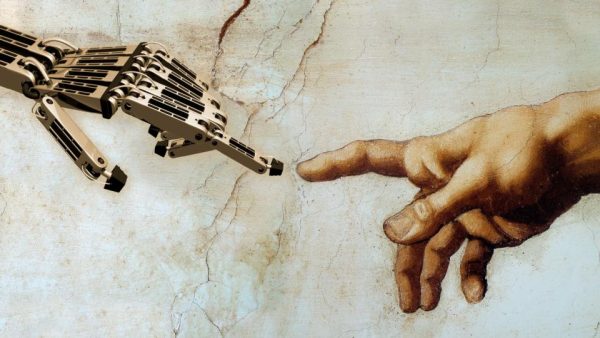
It is now evident that information and communication technologies (ICTs) are central to global capitalism.
During the 1990s and early 2000s four distinct subsectors emerged. Hardware corporations such as Cisco, Hewlett Packard, Sun Microsystems and Compaq produced chips, boards, routers, servers and other infrastructural components.
Other corporations wrote software applications, developed operational systems and installed network architectures (think Microsoft, Intuit, Oracle and Novell). Internet and dot.com companies such as America On-Line, Amazon, eBay and Yahoo attracted speculative and longer term investment.
Land-line based telecommunication corporations such as AT&T, Cable and Wireless, DeutscheTtelecom and Nippon T&T developed or purchased internet services, cable and broadband connections satellite hook-ups and wireless communication services.
Industrially based electronic corporations invested in the manufacture of semi-conductors, fibre- optics, software , wireless phones and other ICT –related products (eg Motorola, Nokia, Samsung,Toshiba).
By 2003 18 of the world`s top 100 non-financial corporations came from the ICT sector. Since then the spread of social media networking has introduced us to the power and reach of social media corporations.
Google and Facebook are the new behemoths of global capitalism.
At the same time, the burgeoning ICT sector engaged with a media-entertainment system transformed by convergences of technology ,content and cultural consumption. Advances in internet applications, digital television and mobile telephones have blurred traditional distinctions between broadcasting, computing , telecommunictions and consumer electronics.
All of these technological changes drove the worldwide electronic networking of finance, production and consumption. As a result transnational corporations came to dominate every sector of capitalism.
If my account here is accurate, vital questions arise.
What is the relationship between global capitalism and the global worker? Who actually makes the gadgets that populate our shiny hi-tech world? What happens to the wageless poor and the precariously employed who have been ejected by the labour-saving algorithms of production?
The first two of these questions have been addressed by Nick Dyer-Witheford in `CyberMarx `(1999) and subsequent writings. For him the global worker is, broadly speaking, quite distinct from older images of the Fordist, male , blue collar worker producing ,say, automobiles in the industrial heartlands of Western countries. Instead, the global worker arises from a complex division of labour strongly associated with the service sector, the incorporation of women workers, the growth of production centres outside the West and flows of migrant labour.
New jobs and occupations, with many hierarchies, are connected directly to information-communication technologies as indicated by the rapid growth of internet and cell phone use. The computer industry, for example, contains a software sector incorporating business applications and digital games designed and engineered in North America, Western Europe and Japan.
Programming jobs have been outsourced to subcontractors in Eastern Europe, South Asia and South East Asia. In the hardware sector, salaried engineers and architects design and prototype phone, gaming and specialist computer devices. Assembly of these devices has been performed in Central America, Eastern Europe and southern China.
In his latest work Nick Dyer-Witheford extends and deepens this analysis. ` Cyber-proletariat : global labour in the digital vortex`(2015) is a vividly written tour-de-force. Readers are introduced to subcontracted production lines in Foxconn factories throughout China.
Workers rapidly assemble Apple`s IPhones during long shifts aware that suicide nets have been built outside the windows to prevent escape.
On the edges of Silicon Valley, behind the techno-hype of IT entrepreneurs Mexican migrant workers assemble circuit boards.
In the Eastern Congo enslaved labourers dig out the specialist minerals necessary for the manufacture of consumer electronics devices.
In the mega- slums of Asian, African and South American cities children pick through e-waste disposal sites for items of re-usable value.
Dyer-Witheford`s response to the question of labour-saving technologies and structural employment lies at the heart of this work. He points to a `moving contradiction` which `manifests as, on the one hand, the encompassing of the global population by networked supply chains and agile production systems, making labour available to capital on a global scale, and, on the other, as a drive towards the development of of adept automata and algorithmic software that render such labour redundant.`(p15).
Yet, as Dyer Witheford also notes, ICTs and social media have helped to facilitate factory uprisings in China, popular uprisings in North Africa and the Middle East ,a worldwide protest movement against the `one percent` (Occupy) along with an anti-corporate ,anti-militarist hacktivist culture encapsulated by Wikileaks. And, the precarious and wageless poor are perfectly aware of how global elites live and where they live.
Anybody interested in further reflection on the ways we live now and where we might be headed are urged to purchase this book and attend the advertised lecture.






It’s just slavery. I watch millions of users toil over magic freaking gold coins and likes in online games and Facebook for free. Meanwhile Google and Facebook own 60% of advertising revenue. Not saying Facebook is bad but it’s users are working for it.
Quote from Wayne’s marvellous post:
“The computer industry, for example, contains a software sector incorporating business applications and digital games designed and engineered in North America, Western Europe and Japan.
Programming jobs have been outsourced to subcontractors in Eastern Europe, South Asia and South East Asia. In the hardware sector, salaried engineers and architects design and prototype phone, gaming and specialist computer devices. Assembly of these devices has been performed in Central America, Eastern Europe and southern China.
In his latest work Nick Dyer-Witheford extends and deepens this analysis. ` Cyber-proletariat : global labour in the digital vortex`(2015) is a vividly written tour-de-force. Readers are introduced to subcontracted production lines in Foxconn factories throughout China.
Workers rapidly assemble Apple`s IPhones during long shifts aware that suicide nets have been built outside the windows to prevent escape.”
What a bloody timely and overdue article on this highly important subject, Wayne, thank you so much.
Yes, we are now living in a world where (once again) those “enjoying” the benefits of modern technology and conveniences are totally disconnected to the slave workers that make this “miracle” happen, those hidden from our eyes and separated from our environs, who slave away in factories or software development labs in often low wage countries.
Our teens, same as the generation whatever, the boomers, they all do not have to smell the sweat, do not have to sense the stress and pain, of those that do make things happen. They are disconnected from all the hard work, the polluting production, the underpaid, the enslaved and desperate, and can pretend, life is “great”, have you seen my latest instagram pic?
What a crap world we live in, hence we have the start of waves of desperate migrants from many poor countries breaking borders, they had enough, they want part of the world that has a better life, that enjoys and lives in clean, sanitary and still somewhat financially well off societies.
But all this is on borrowed time and overstretched resource exploitation, we are going to face a massive revolution in this world, that will risk destroying the whole societal and economic system we now have, and may lead to little improvement anyway, as the resources needed to offer ALL a better life, are simply no longer there. And the rest will be destroyed by the climate change disaster, the result of burning and exploiting fossil and other resources we still use in massive amounts.
We are stuffed, we are facing the end, where we will have to face the revolt of those denied to take part of our illusionary IT and chat society, disconnected from the working part, and the polluting part, the shockingly poor part.
Capitalism is near self collapse, I note, it is near there. The housing crisis here is just a tiny and self inflicted symptom, hardly worth comparing, it is going to be over, fight for your survival, all out there.
‘We are stuffed, we are facing the end’
Yes. And the end is a lot nearer than most people think or can even imagine.
Negative interest rates portend the end of the create-money-out-of-thin-air-and-charge-interest-on-it financial system that reigned supreme for centuries. How much longer can central banks prop it all up? 1 year? 2 years? 3?
The rapid meltdown of the Artic (lowest ever ice cover or no ice at all anticipated later this year)
http://thinkprogress.org/climate/2016/05/03/3774789/april-record-arctic-ice-loss/
portends climate disruption like never seen before, followed by massive sea level rise.
And the declining global liquid fuel supply forecast for the end of this year
https://gailtheactuary.files.wordpress.com/2014/01/tverberg-estimate-of-future-energy-production.png
suggests collapse of food and transport systems by 2025 at the latest.
The combination of fiat currency collapse, environmental collapse and energy collapse suggest ‘the system’ won’t continue to function much beyond 2020.
Even if the timing of the various factors is out by a year or two, it is clear the writing is on the wall and everything will be very different 10 years from now.
I don’t see how it’s any different from the textile or coffee industry, sweated labour where the workers get nothing. All we can hope for is that increasing productivity eventually lifts these workers out of poverty.
Action beats hope anyday !!!!!
There are debt ceilings to hope and action. After all the debt gets rolled up into the IMF. Then we will all know it was a Ponzi scheme all along. No hope or action can fix money problems.
Comments are closed.